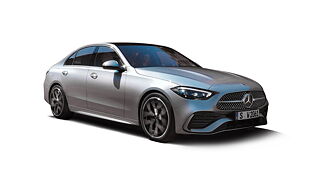Introduction

How do you prepare for accidents? No, the answer does not involve intentionally getting into few minor ones just for practice – it is simply by driving with right techniques, improving reflexes and being a little more cautious while driving. As boring as all of this might sound, the fact is it works; and when you have an opportunity of practicing at the BMW Driving Academy in Maisach, it doesn’t even feel boring anymore!
BMW Driving Academy

As part of our official trip to Munich, we visited the BMW’s training center at Maisach just about 30km from their headquarters. `Built on what was earlier the Furstenfeldbruck airfield, the facility is spread over 1.3 million square meters, providing ample opportunity to create obstacles and simulate almost every kind of driving situation for more than a couple of dozen pupils.
On a surprisingly bright and sunny March day, we spent ample time at the 1.3km circuit and 3km airstrip at Maisach with the BMW trainers to hone our basic skills. The training involved classroom and practical sessions that are simple to understand and look fairly easy to implement, but add lot of value to driving skills.

We started the day with simple registration, which automatically also generated a single day insurance policy. The hour-long classroom session followed, starting with basic tips on the ideal seating position and ways of holding the steering wheel. It did get a bit complicated later with discussion on the forces acting on each wheel during acceleration, braking, steering and the technologies that keep the car on road to cover up for human error.
For people who have been driving for a while it might sound a little silly to redo the basics like adjusting seats. But unless the basics are right it is little difficult to practice the text-book methods on the track. The trainers for the sessions are professionals with motorsports background and they take their job very seriously. The instructions are not just oral but they sit with each participant and demonstrate every bit.

Once the theory and other basics were done, it was time to hit the track and our companion for the day was the 3 Series 330D sending 258bhp and 560Nm to the rear wheels. The training started with a basic slalom course that needs proper steering input, highlighting the importance of steering feel and position. Left-hand-drive cars were not a big help, but after few minutes and knocking over a couple of cones things became easier.

The braking test was possibly the most important activity of the day and also the most tiring. Come at a constant speed, hit the brakes as hard as possible and stop before the obstacle (in our case – cones!). It is an immense workout for calf muscles and it didn’t end with getting the braking right. The difficulty level increased with extra speed, then the braking distance reduced and finally it included taking evasive measures by changing lanes (these were performed on skid pad with water on asphalt). The most important lesson – when the speed of car doubles, the braking distance increases four times.
Post lunch, the sessions became even more interesting with understanding and controlling understeer and oversteer. Everything that was part of the stability control was switched off and nothing but driver control decided the direction of the car. It is not easy to understeer a rear-wheel-drive car and we took assistance from the skid pad once again. The cars understeer because the steering input at that speed is more than it can manage and the front tyres lose grip and continue to go straight. The trick here is to get off the throttle and reduce the steering input, this is very easily to correct; but it is something that most Indian cars are capable of since they are all front-wheel-drive.


Tackling an oversteering though is a different ballgame altogether. Little extra power to a RWD without driver assistance and the car starts sliding. Now getting control of the car requires following steps – get-off throttle, steer in the opposite direction, keep looking where you want to go and once the car is back in control steering in the intended direction, but with less throttle input. It might not seem like a lot, however it has to be done in a fraction of a second and needs lot of practice. There is a very nice reward for having a good control on oversteer, drifting! But sadly that is not possible with the most FWD cars in India and it is a big cost in terms of tyre wear. Also let us ignore drifting for the time being and come back to the basics for safety.


By the time we were done with all the exercises it was already past 1600 hours and we had just about enough time for an interesting challenge that made us apply all the things that we had learned through the day. We ended the day with BMW handing us certificates for completing the programme.

Now none of the above exercises seem too dramatic or extraordinary – but the thing is we had an opportunity to practice in a controlled environment. A driver needs to be ready for an untoward situation on the road and the only way to be ready is by knowing how to react and improve one’s reflexes. The BMW Driving Academy precisely helps in doing that and it is unfortunate that we don’t have similar facilities in India. Nevertheless, if you drive cars and are planning to visit Germany, this is a destination that you should add to your list.

![BMW 5 Series [2013-2017] Image BMW 5 Series [2013-2017] Image](https://imgd.aeplcdn.com/272x153/ec/4b/3A/9761/img/m/BMW-5-Series-Right-Front-Three-Quarter-50065_ol.jpg?t=192127513&t=192127513&q=80)
![BMW 5 Series [2013-2017] Right Front Three Quarter BMW 5 Series [2013-2017] Right Front Three Quarter](https://imgd.aeplcdn.com/199x112/ec/4b/3A/9761/img/m/BMW-5-Series-Right-Front-Three-Quarter-50065_ol.jpg?v=201711021421&q=80)
![BMW 5 Series [2013-2017] Right Rear Three Quarter BMW 5 Series [2013-2017] Right Rear Three Quarter](https://imgd.aeplcdn.com/199x112/ec/4b/3A/9761/img/orig/BMW-5-Series-Right-Rear-Three-Quarter-20872.jpg?v=201711021421&q=80)
![BMW 5 Series [2013-2017] Left Rear Three Quarter BMW 5 Series [2013-2017] Left Rear Three Quarter](https://imgd.aeplcdn.com/199x112/ec/9761/img/l/BMW-5-Series-Rear-three-fourth-15063.jpg?v=201711021421&q=80)
![BMW 5 Series [2013-2017] Steering Wheel BMW 5 Series [2013-2017] Steering Wheel](https://imgd.aeplcdn.com/199x112/ec/4B/3A/9761/img/l/BMW-5-Series-Steering-Wheel-20885.jpg?v=201711021421&q=80)
![BMW 5 Series [2013-2017] Interior BMW 5 Series [2013-2017] Interior](https://imgd.aeplcdn.com/468x263/ec/4B/3A/9761/img/l/BMW-5-Series-interior-Power-window-20891.jpg?v=201711021421&q=80)






















